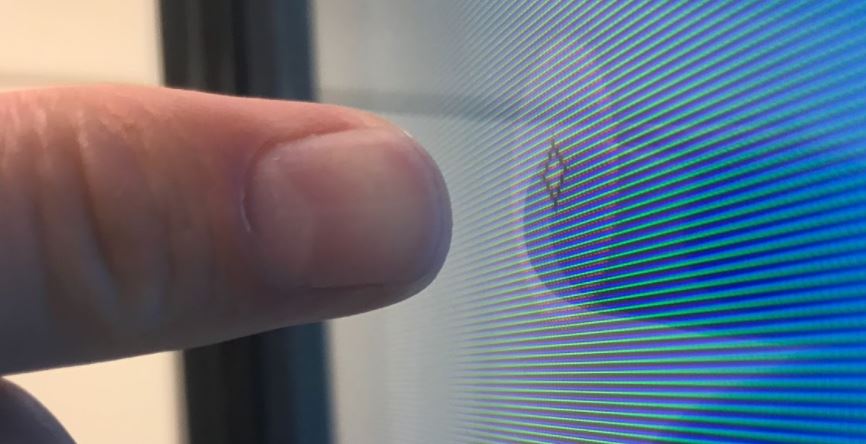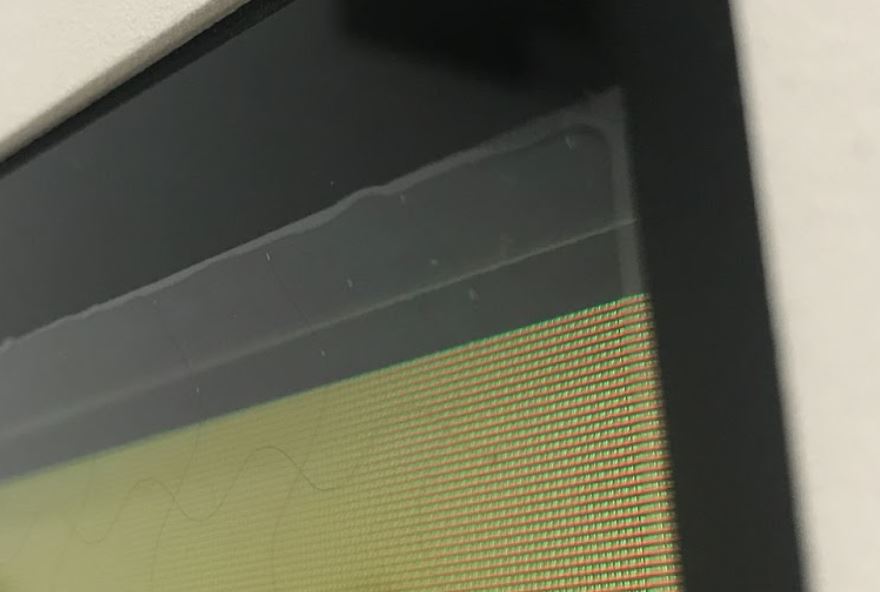Since the introduction of cellphones and tablets, the touchscreen has become the most widely-used human-machine with keyboard interface.
Even though voice command made its debut with Siri, Google or Helix (Videotron), fingertip communication remains significant.
But since the emergence of COVID-19 in our world, physical contact has suddenly become prohibited. Disinfection has triggered a touch psychosis, which is a bad omen for our communication with keyboards and touchscreens.
Fortunately, not all touch technology requires contact with the skin. Nummax products benefit from this advantage.
Here are the 6 most popular touchscreen technologies among the 10 that exist to date.
Analog resistive touch technology
This consists of 2 conductive surfaces separated by a very thin insulation containing spacer dots. When the outer surface is pressed, the 2 conductive surfaces make contact. The change in resistance is detected by the display controller.
The advantage of this technology is that an inanimate object can be used to apply pressure.
Its disadvantage is that the contact between the two surfaces creates a micro electric arc which, over time, deteriorates the system’s sensitivity and precision.
Capacitive sensing technology
Used for small, mid-to-high-end touch devices, this technology uses an indium (metal)-based layer that accumulates charges. When a finger touches the surface, it creates a capacitance change, the location of which is detected by sensors in the corners of the screen. However, this method can only determine a single point of contact.
To improve this process and to add multi-touch capability, the indium layer can now be crossed by a series of horizontal and vertical wires. It is no longer just the angles that measure the load variations but also all the entry and exit points of the wires.
This technology is limited because of the scarcity of indium and the smaller dimensions of touch surfaces.
Infrared technology
This technology involves the intersection of a multitude of beams and sensors positioned around the screen. As soon as you interrupt the beams, it creates one or more points of contact, whether with your fingers or any other object.
This technology cannot be used for outdoor interactive kiosks because of the risk of dust or particle accumulation.

Actual contact with the surface is not necessary.
Surface wave technology
Surface wave touch technology is similar to infrared technology except that it relies on ultrasound.
These waves sweep across the surface of your screen, and when you put your finger or any other object on the screen, the controller picks up the interference and locates the coordinates of the point of contact.
This technology is limited by its sensitivity to the slightest dust or alteration of the screen surface, both which distort the controller calculations.
Induction technology
If you’ve had the opportunity to use a Wacom tablet for drawing, you’ve experimented with induction touch.
This technology requires a stylus containing a coil and a tablet, also equipped with a coil, generating a magnetic field. When the stylus nears it, this magnetic field is disturbed, creating contact.
Nano Touch technology
Nano Touch technology relies on the application of a waterproof vinyl film containing contact points in the polymer.
This transparent vinyl film is adhesive and can therefore be applied to all smooth surfaces. So you can make just about any display tactile, whether indoors or outdoors in the rain.

| Technologies | Meets health guidelines (no skin contact) |
Technologies chosen by Nummax |
| Analog resistive | ✔ | – |
| Capacitive | – | – |
| Infrared | ✔ | ✔ |
| Surface wave | ✔ | – |
| Induction | ✔ | – |
| Nano Touch | ✔ | ✔ |
Nummax’s touch-screen choices
For all its indoor kiosks, Nummax has chosen infrared technology.
This provides several advantages for customers:
- Low cost
- Reliability
- Multi-touch
- Meets health regulations
- Compatible with large surfaces (see our indoor 70” kiosk)
For Nummax’s outdoor kiosks, Nano Touch technology has been selected for the same reasons as infrared, but with the added benefit of being weather-resistant.
Since the advent of touchscreen cellphones, we have immersed ourselves in this world of touch in a natural way, and what matters most now is what you do with this relationship created with the machines.
Whether through a stylus or using your fingers, you’re sending a signal to the computer to provide your users with a world of interaction and communication.
Nummax interactive kiosks provide many possibilities, and it’s up to you to use them to their full potential.
